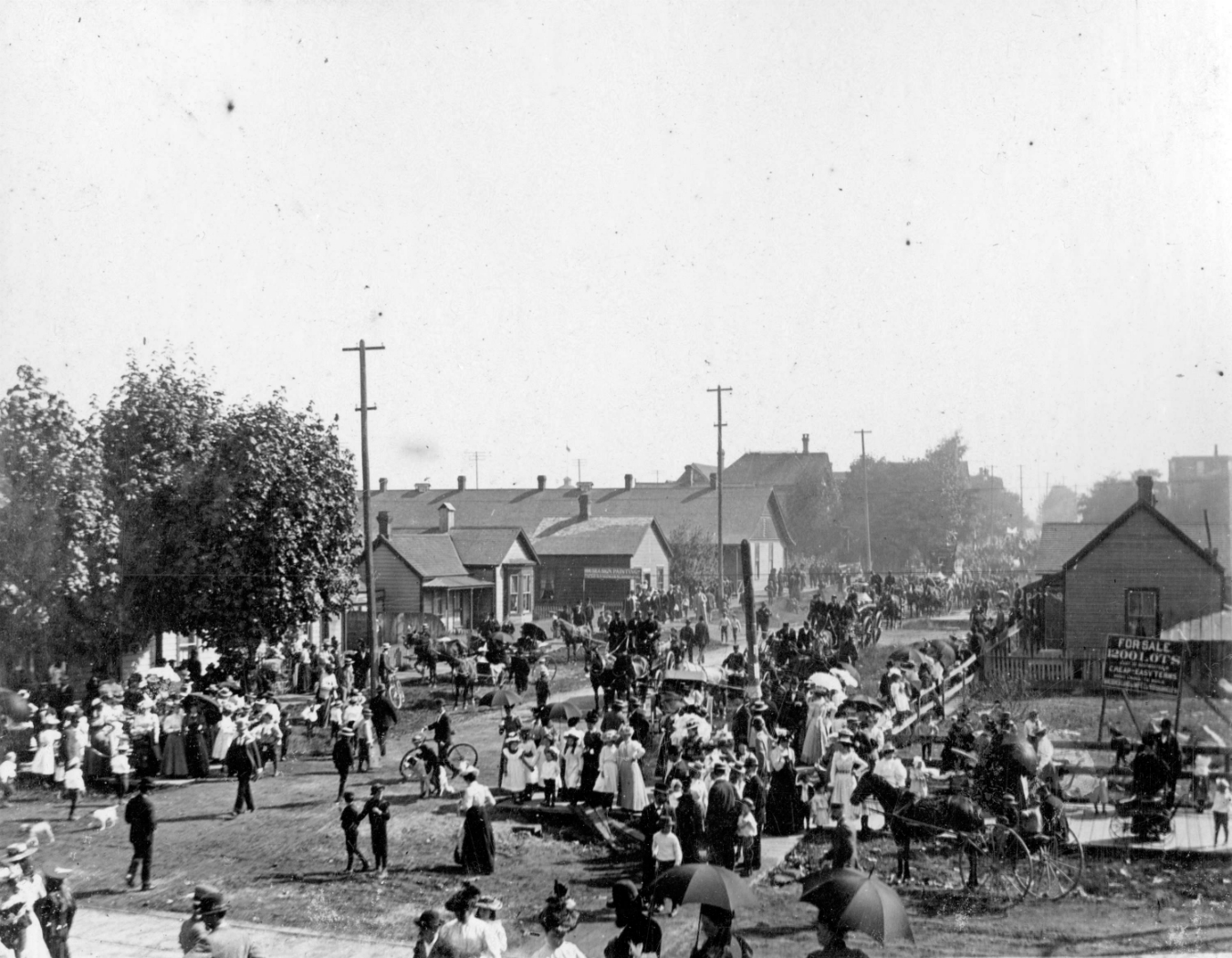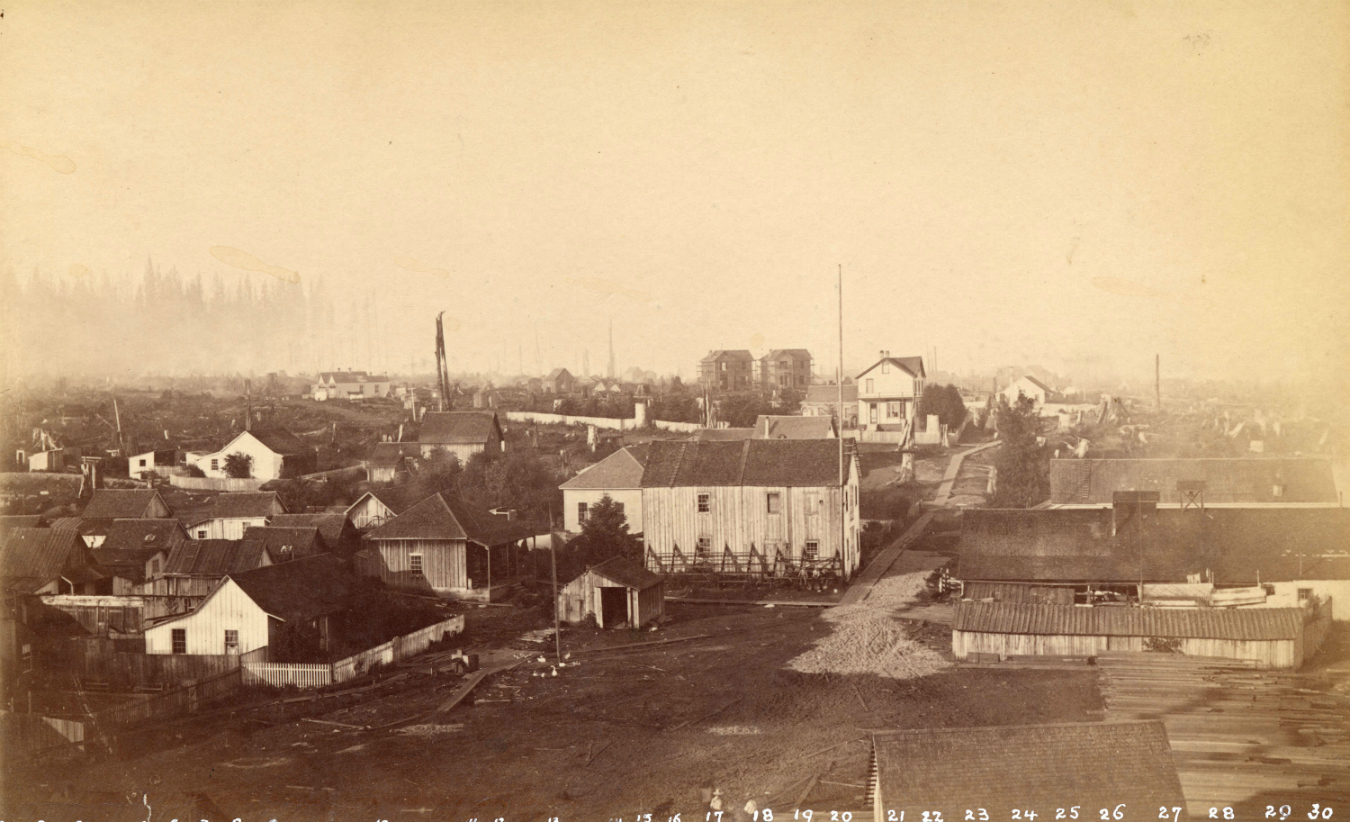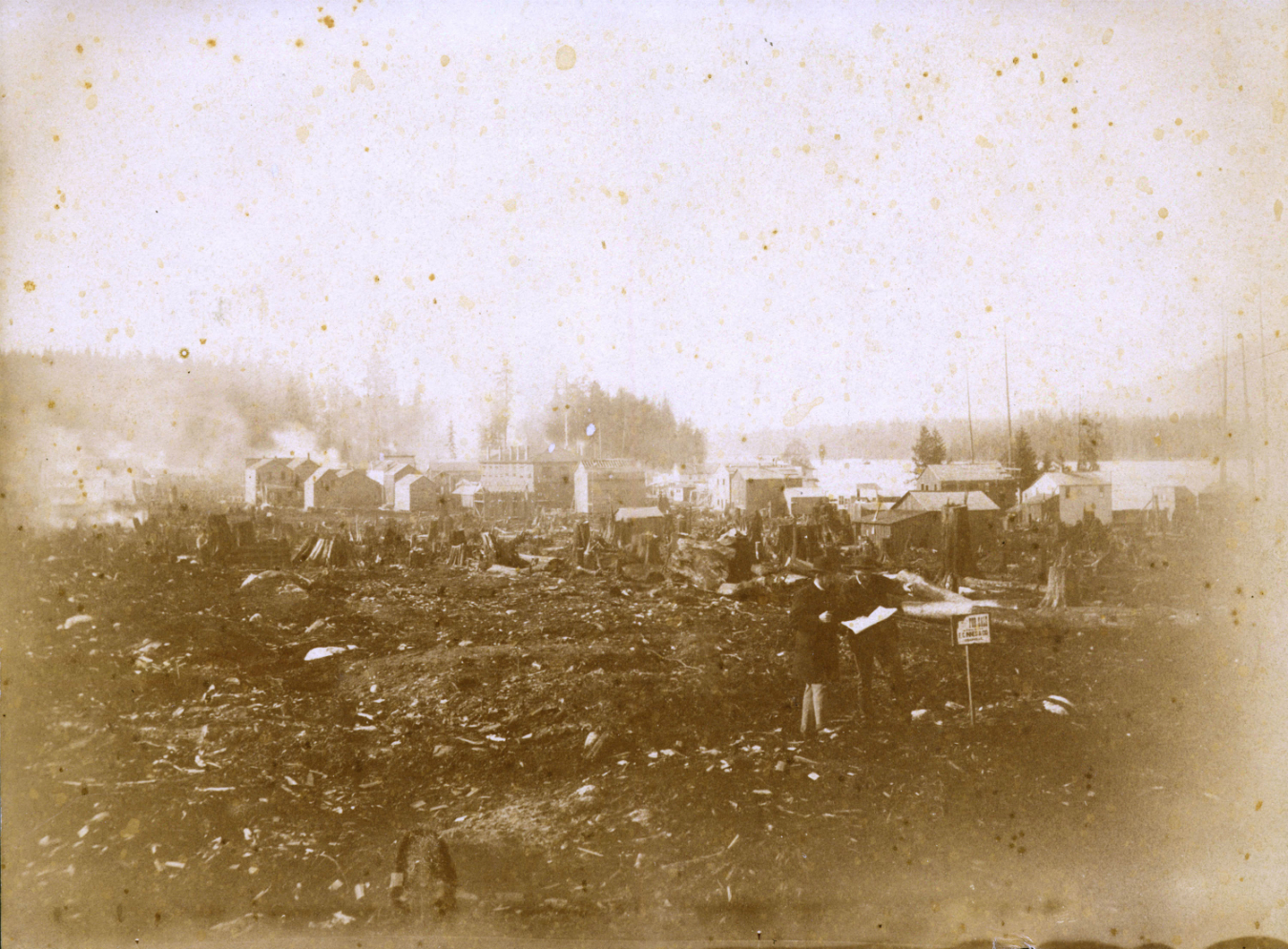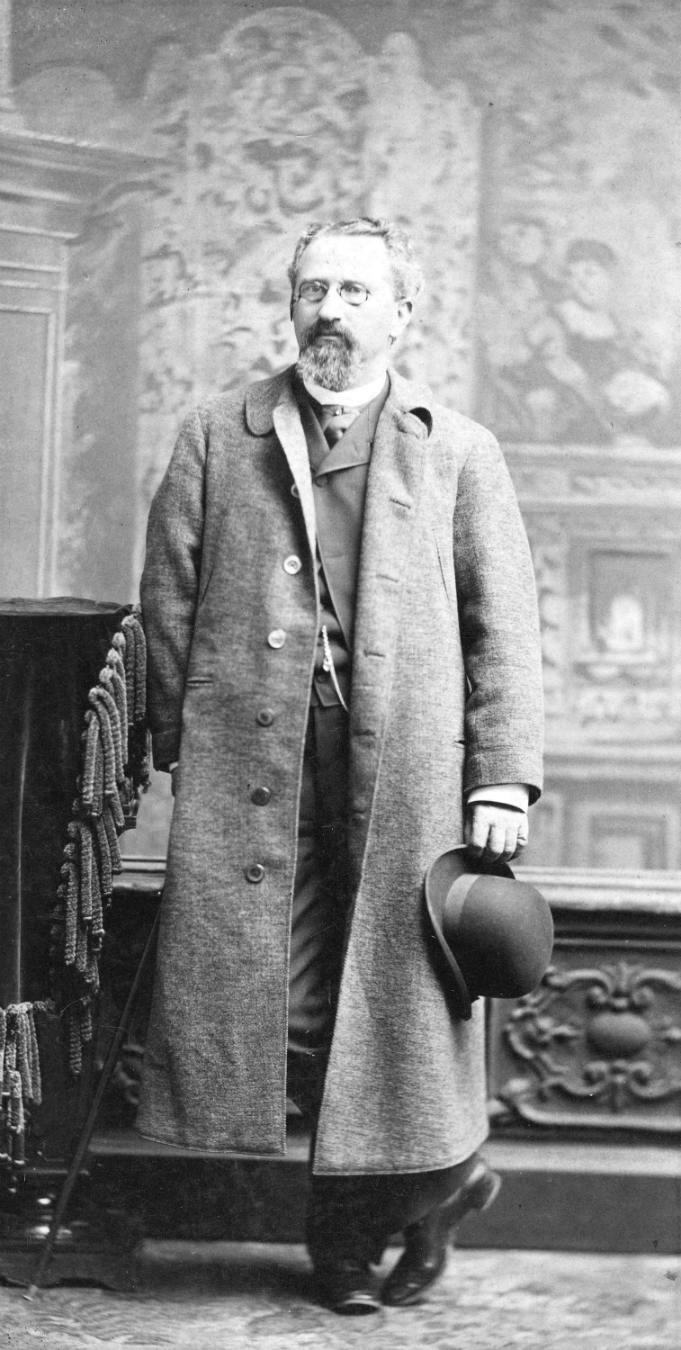A friend from Colombia recently asked me innocently, “Why is downtown Vancouver where it is?” My eyes opened wide—she had asked my favourite question. The simple yet confusing answer is: because it’s not in Port Moody. That is where the terminus to the transcontinental railway was originally supposed to be located. Instead, an insider tip led a cadre of wealthy Victoria-based land owners to buy up hundreds of acres adjacent to the site chosen by the Canadian Pacific Railway (CPR).
Isn’t it fitting that a place that would become known as a hedge city for foreign real estate speculation began as a speculative real estate boom? I first heard about this insider tip in an article by the Vancouver Courier‘s Lisa Smedman. Titled “A Syndicate of Gentlemen”, it sounded more like the latest buzz band from Brooklyn than the formative group of landowners who made a sleepy logging camp called Granville Townsite the booming metropolis known as Vancouver.
This syndicate was formed by a realtor for the CPR named Arthur Ross who had in his possession a letter from Sir William Van Horne, general manager of the railway. The letter confirmed that the terminus would be not in Port Moody, but in Gastown. Ross recruited names such as Walter Graveley, Dr. Israel Wood Powell, Major Charles Thomas Dupont, and David Oppenheimer (who later went on to become Vancouver’s second mayor). The syndicate bought most of its land from the Hastings Sawmill, probably for a penny compared to land values today. They recruited the land owners and convinced them to offer their Coal Harbour properties to solidify the CPR’s decision. Yup, they pretty much gave the CPR all of downtown.
That a group of wealthy investors bought up land, knowing it would be worth more one day, makes perfect sense in the context of Vancouver’s history of real estate speculation. The CPR would build a hotel and an opera house downtown, and the syndicate would push development eastwards into Strathcona. When the post office was built where Sinclair Centre stands today, most residents were outraged. They had basically built it on the edge of a forest. As Smedman writes, “Ultimately, the rivalry between the CPR and the syndicate would divide Vancouver east and west at Carrall Street (and at Ontario street, the more southerly boundary between CPR and syndicate lands), creating an east-west split that endures to this day.”
Yes, those sunken but stately homes of Strathcona, built before the land could be graded by engineers, are a direct result of why the financial district sprung up around Howe Street. A perfect juxtaposition. The city pivots on an invisible axis. It’s where two town plans clash—but it’s a symbolic divide, as well. That subtle turn driving east down Hastings represents much more than a physical boundary; it’s socio-economic, it’s cultural.
The result is a sort of frontier mentality that pervades the psychological and physical makeup of the still young city. As Rob Brownie and Annable Vaughn wrote in the book Unfinished Business, “the effect is a persistent and primordial tension between the expanding forms of the built environment and the natural plane of the horizon.” Vancouver has always felt like an unfinished project.
Indeed, Barry Broadfoot’s poetic observations in the 1976 book The City of Vancouver sum it up: “As my ferry trundles across Queen Charlotte Channel, with the towers of UBC off to the starboard, softened by a misting rain or hardened by splintering sunshine, it takes me to a city someone once characterized as ‘a nice place if they ever get it finished'”. Even when James Raymur, the Hastings Mill manager, first saw Granville, he proclaimed, “What is the meaning of this aggregation of filth! I will not permit a running sore to fasten itself upon an industry entrusted to my care.” This was 17 years before Vancouver was incorporated as a city, though the same mentality pervades in our views of the Downtown Eastside.
And as we lure investors with boosterism like Expo and the Olympics, while remaining resentful of foreign ownership, recall this 1884 ad by Syndicate member Walter Gravely in the Portland, OR periodical the West Shore: “Better chances for investment were never offered, lots that can now be bought for a few hundred dollars will beyond a doubt be worth as many thousands within a year or two.” How prophetic. I wonder what he would think of our $1.47 million average house prices today.
Vancouver has always been about speculation. The pattern of development is so intrinsically tied to real estate that a simple question like, “Why is downtown where it is?” becomes an exercise in history and politics. Next time you gaze at a romantic picture of our skyline, remember Ross and Gravely and the Syndicate of Gentlemen.
Read more history stories here.












